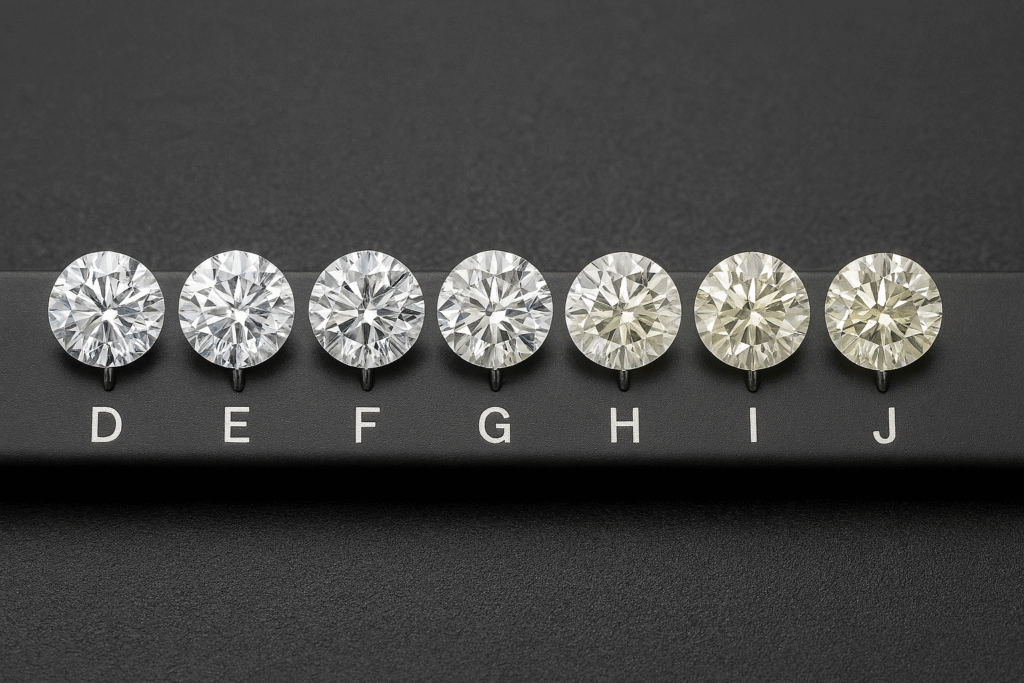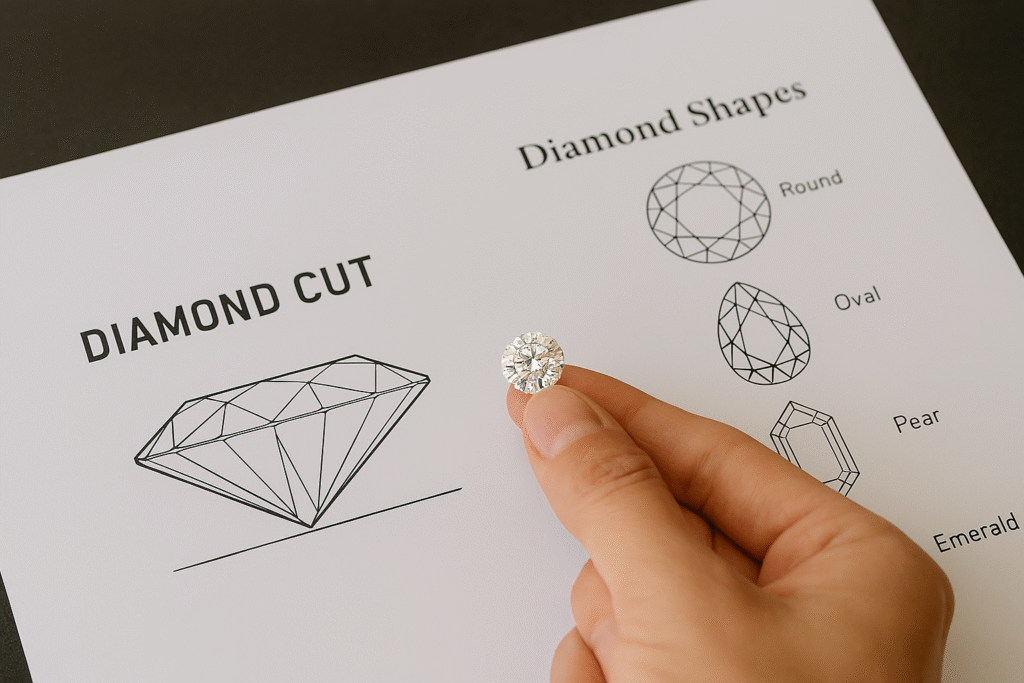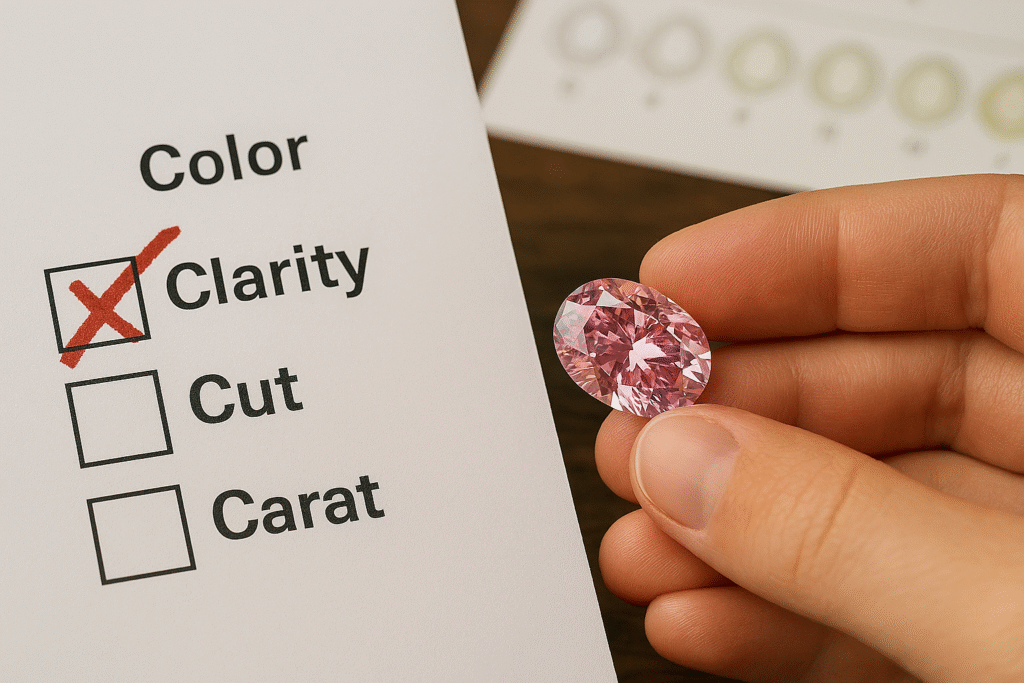Learn about GIA master stones – the standardized diamond reference set used for accurate color grading. Discover how these calibrated diamonds ensure consistent D-to-Z color assessment worldwide.
Understanding GIA Master Stones
GIA master stones serve as the gold standard for diamond color grading. These carefully selected diamonds represent each specific grade on the D-to-Z color scale.
Each master stone provides a fixed reference point. This eliminates guesswork from the grading process.
What Makes Master Stones Special
Precise Selection Process
Every master stone undergoes rigorous selection. GIA chooses only round brilliant cut diamonds that perfectly match specific color grades.
The stones must meet strict criteria:
- Exact color match to designated grade
- Consistent cut quality
- Optimal clarity for accurate comparison
- Stable color characteristics over time
Standardized Reference System
Master stones create a universal language for diamond color. A D-grade diamond in New York matches a D-grade diamond in Tokyo.
This consistency protects both buyers and sellers. You get exactly what the certificate promises.
How Gemologists Use Master Stones
Controlled Grading Environment
The grading process requires specific conditions:
- Standardized lighting setup
- Neutral background colors
- Consistent viewing angles
- Controlled temperature and humidity
Table-Down Viewing Method
Gemologists place diamonds face-down during grading. This position reveals the body color more clearly than face-up viewing.
The diamond being graded sits next to master stones. The grader compares colors directly.
Grade Assignment Process
The gemologist finds the master stone that most closely matches the test diamond. This determines the final color grade.
If a diamond falls between two master stones, the grader assigns the lower grade. This conservative approach protects consumers.
The D-to-Z Color Scale Explained
Colorless Range (D-F)
- D Grade: Completely colorless – the rarest category
- E Grade: Colorless with minimal trace elements
- F Grade: Colorless to the untrained eye
Near Colorless Range (G-J)
- G-H Grades: Slight color visible when compared to higher grades
- I-J Grades: Slight color may be visible to trained observers
Faint Color Range (K-M)
Color becomes more apparent in larger diamonds. The tint is usually yellow or brown.
Very Light Color Range (N-R)
The color is easily visible to most observers. Still considered acceptable for many jewelry applications.
Light Color Range (S-Z)
Distinct yellow or brown color. Often used in vintage or fashion jewelry settings.
Why Master Stones Matter to You
Consistent Quality Assurance
Master stones ensure your diamond certificate means the same thing globally. A G-color diamond graded in Los Angeles matches one graded in Bangkok.
Protection Against Fraud
The standardized system prevents grade inflation. Sellers cannot manipulate color grades without detection.
Investment Confidence
You can buy diamonds knowing the grading system is reliable. This stability protects your investment value.
The Science Behind Color Grading
Light Absorption Properties
Diamond color comes from trace elements or structural defects. Nitrogen creates yellow tints. Boron produces blue colors.
Master stones represent pure examples of each absorption level.
Viewing Angle Importance
Face-down viewing eliminates light return effects. This method reveals true body color without interference from brilliance.
Human Eye Limitations
The human eye can distinguish subtle color differences when comparing diamonds side-by-side. Master stones provide the necessary reference points.
Quality Control Measures
Regular Calibration
GIA regularly checks master stones against other certified references. This prevents drift in grading standards over time.
Multiple Grader System
Several gemologists grade each diamond independently. Their results must agree before final certification.
Ongoing Training
Graders receive continuous education on master stone usage. This maintains grading accuracy across all GIA facilities.
Common Misconceptions About Color Grading
“Whiter is Always Better”
Color preference is personal. Some people prefer warmer tones in larger diamonds.
“Color Differences Are Always Visible”
Adjacent grades often look identical in jewelry settings. The difference becomes apparent only under comparison conditions.
“Master Stones Never Change”
While extremely stable, master stones can shift over time. GIA monitors and replaces stones as needed.
Practical Tips for Diamond Buyers
Understanding Certificates
Look for GIA certification when buying diamonds. The color grade represents comparison to authentic master stones.
Setting Considerations
Lower color grades can look whiter in yellow gold settings. Higher grades shine in white metal settings.
Size Effects
Color appears more prominent in larger diamonds. Consider this when choosing color grades for different carat weights.
The Future of Color Grading
Technology Integration
New spectroscopic methods supplement traditional grading. These tools provide additional verification of master stone comparisons.
Expanded Applications
The master stone concept now applies to colored diamonds and other gemstones. This expansion improves grading consistency across all gem types.
Global Standardization
More laboratories adopt GIA master stone protocols. This trend increases grading consistency worldwide.
Making Informed Decisions
Master stones represent decades of gemological research and development. They provide the foundation for reliable diamond color assessment.
When you see a GIA color grade, you can trust it represents comparison to these carefully maintained standards. This system protects your investment and ensures consistent quality across the global diamond market.
The master stone system continues evolving with new technology and research. This ongoing development maintains the accuracy and reliability that makes GIA certification the industry standard.
GIA master stones are carefully selected reference diamonds representing each grade on the D-to-Z color scale. These standardized stones provide gemologists with an objective benchmark for consistent diamond color grading in controlled environments.




